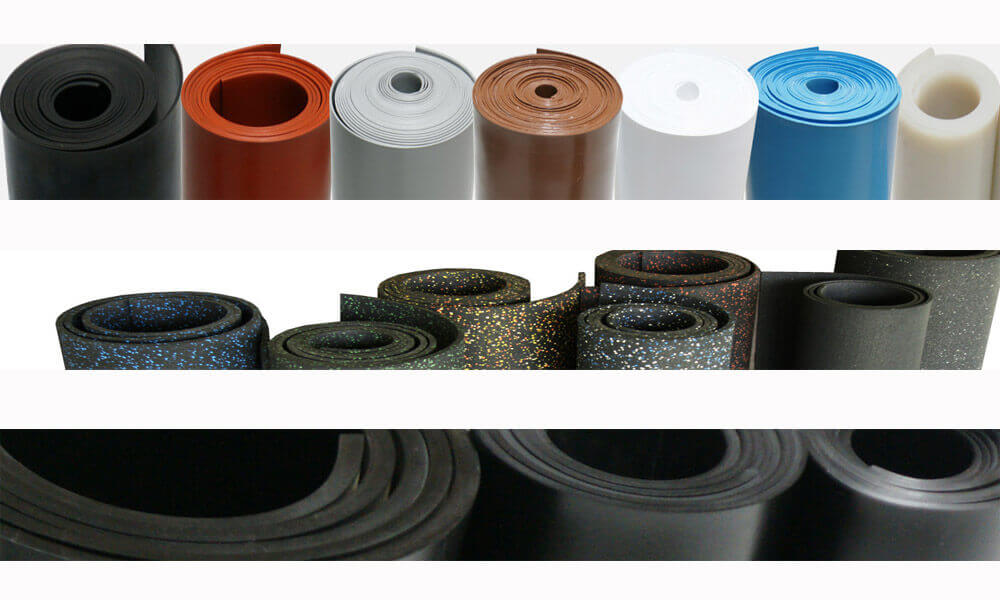EPDM rubber is a synthetic elastomer formally known as Ethylene Propylene Diene Monomer. EPDM products are offered in a few of variations. Their common feature though is that they are generally very good at resisting the degrading effects of weathering, ozone, and UV ray exposure. EPDM material is highly recommended as a type of outdoor rubber for applications where there is significant environmental exposure.
it is extremely versatile with an ability to withstand high temperatures (up to 215c). Because of this versatility it is used in Automotive, Industrial and several other industries. Within those, EPDM is often used for Seals, O-Rings and Grommets because of its resistant properties against weathering, acids and Alkali’s.
EPDM sheets are often used in situations that need a good degree of waterproofing, such as in playground flooring or vehicle sealing strips.
In addition to being a great elastomer for outdoor use, EPDM products have a very good degree of chemical resistance. EPDM rubber popular for use in industrial settings, such as in the form of seals and gaskets.
EPDM rubber is available in solid and cellular forms. The solid form of EPDM sheet rubber is generally denser and better suited to more physically demanding applications. It does not compress very well, which means that it will retain its original solid form in the presence of physical pressure. The cellular version of EPDM rubber is softer and can be compressed more easily for applications where flexibility is key.
Given these qualities, EPDM rubber is a solid and dependable synthetic elastomer with dynamic physical properties that make it ideal for use in outdoor and non-oil chemical applications. Rubber-Cal’s EPDM sheet rubber is a blend that contains styrene butadiene rubber, which is meant to give it a higher degree of durability and longevity. More importantly, industrial communities have embraced EPDM rubber because of its good chemical resistance and temperature endurance.
Roofing: Using ethylene propylene diene monomer (E.P.D.M. rubber) as a roofing membrane for buildings is becoming an increasingly popular roofing option.
The black, EPDM rubber acts as a water-resistant barrier that is durable enough to withstand constant exposure to UV rays and ozone, and also serves as an insulator. It won’t be troubled by moist weather conditions such as rain or snow.
Gaskets and Seals: With a low compression set, a high tensile strength and a resistance to abrasions, ethylene propylene diene monomer can perform as an outstanding gasket or seal component. It possesses a host of chemical resistances which make it appropriate for a diverse set of applications.
Pond Liners: The water-resistant quality of EPDM is also utilized in man-made ponds and lakes to prevent water seeping into the subsurface. This elastomer is perfect for this application due to its resistances to UV rays and ozone, allowing the liner to last for many seasons. These are generally very thin sheets of E.P.D.M. rubber which are very large and contain few or no seams
Outdoor Flaps and Curtains: This is an unusual application but when there is a need for an outdoor rubber flap, there is no better elastomer that could be used. Airplane hangars are one such place that include flaps and curtains made from EPDM.
Bumper and Rubber Floor Mat: It’s common for outdoor bumpers and protective floor mat to be made from EPDM material since it resists drying out and cracking longer than other elastomers. The resilience of EPDM matches other types of elastomers, with the exception of natural rubber.
There are many more components and uses for EPDM material that weren’t mentioned (e.g., squeegee components, belts). Its many helpful properties make it useful in many locations, for many applications. It’s very simple and easy for manufacturers to produce components from EPDM sheets. Creating an item from sheet rubber has a quick turnover and is very cost-efficient, especially for such an all-around rubber like black EPDM!

